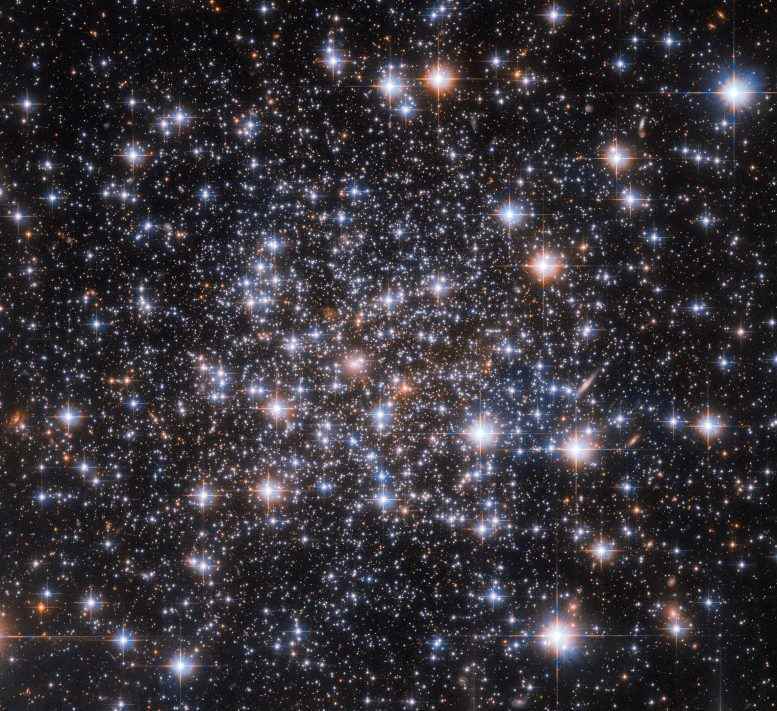Ruprecht 106 küresel kümesinin Hubble Uzay Teleskobu. Kredi: ESA/Hubble & NASA, A. Dotter
Sherlock Holmes’un büyütecinin devasa bir versiyonu gibi,[{” attribute=””>NASA/ESA Hubble Space Telescope has been used to peer into an astronomical mystery in search of clues.
Globular clusters are stable clusters of tens of thousands to millions of stars. They are typically much larger than open clusters and are tightly gravitationally bound.
The enigma in question concerns the globular cluster Ruprecht 106, which is pictured in this image. While most of the constituent stars of globular clusters all formed at approximately the same location and time, it turns out that almost all globular clusters contain groups of stars with distinct chemical compositions.
These distinct chemical fingerprints are left by groups of stars with very slightly different ages or compositions from the rest of the cluster. A tiny handful of globular clusters do not possess these multiple populations of stars, and Ruprecht 106 is a member of this enigmatic group.
The Advanced Camera for Surveys, which replaced Hubble’s Faint Object Camera during Servicing Mission 3B, offers a wavelength range that extends from the ultraviolet, through the visible and out to the near-infrared. Its wide field of view is nearly twice that of WFPC2, Hubble’s former workhorse camera that it replaced. It offers magnificent image quality and high sensitivity, and has increased Hubble’s potential for new discoveries by a factor of ten.
Hubble captured this star-studded image using one of its most versatile instruments; the Advanced Camera for Surveys (ACS). Much like the stars in globular clusters, Hubble’s instruments also have distinct generations: ACS is a third-generation instrument that replaced the original Faint Object Camera in 2002. Some of Hubble’s other instruments have also gone through three iterations: the Wide Field Camera 3 replaced the Wide Field and Planetary Camera 2 (WFPC2) during the final servicing mission to Hubble. WFPC2 itself replaced the original Wide Field and Planetary Camera, which was installed on Hubble at launch.
Among its numerous accomplishments, ACS has helped map the distribution of dark matter, detected the most distant objects in the universe, searched for massive exoplanets, and studied the evolution of clusters of galaxies.
NASA Uzay Mekiği’ndeki astronotlar, Hubble’a yörüngede toplam beş kez hizmet verdi ve eskiyen ekipmanı yükseltmeyi veya aletleri daha yeni, daha yetenekli sürümlerle değiştirmeyi başardı. Alçak Dünya yörüngesindeki bu yüksek teknolojili tamircilik, Hubble’ın 30 yılı aşkın bir süredir astronominin en ileri noktasında kalmasına yardımcı oldu.

